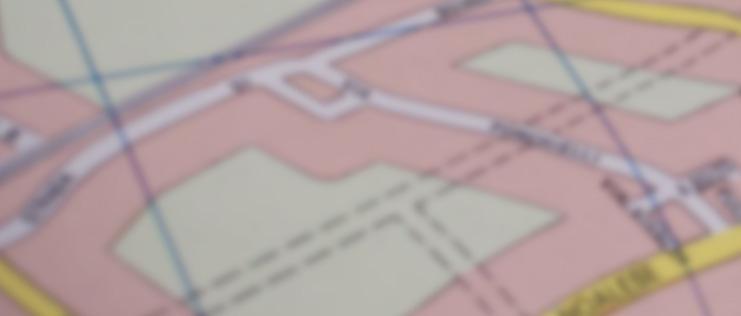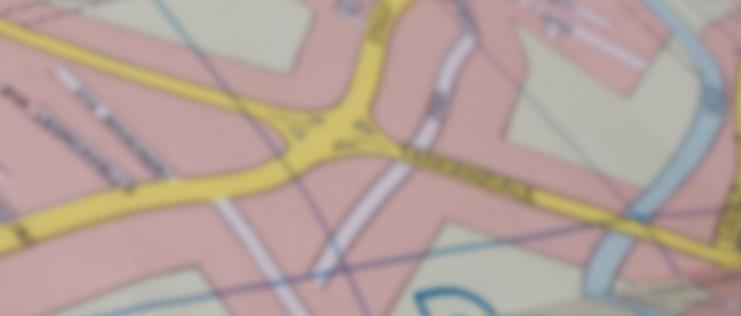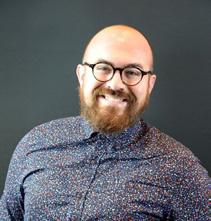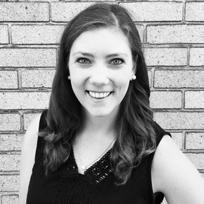
10 minute read
Positioning Location & Setup
MICHAEL A. GOODMAN & LINDSEY L. TEMPLETON
POSITIONING LOCATION & SETUP
Advertisement
Environments are understood through the perceptions of people within them. How individuals are attracted to or satisfied within an environment is partially a function of how they perceive, evaluate, and construct the environment. In turn, their perceptions become the reality of that environment. As environments, campus fraternity/sorority life (FSL) departments are made up of many stakeholders including staff, alumni, inter/national organizations, and students. The location of these departments is often the epicenter of the work and serves as a central location to affiliated students and campus partners. For professionals working in FSL, there is no set guideline or uniform setup to the physical structure. Some institutions have a premier location on campus, such as a student union or stand-alone building, whereas others hold a shared space within other departments and divisions on their campuses.
What people see, understand, and feel about a place assists in developing their perspective on the environment. According to Strange and Banning, “A well-planned place is seen as being active and having greater influence than just making opportunities available.” When considering physical space, it is important to acknowledge the setup itself and the ways a space may dictate specific behaviors of students and staff who use it.
We illuminate these sentiments as a way to connect FSL physical environments as deeply intertwined with the overall work environment experiences for FSL professionals. While Strange and Banning also explore human aggregate and socially constructed components of environment, we are specifically illuminating physical characteristics of an environment through the unique lens of new FSL professionals one year after earning a master’s degree. As a result of the variety of physical environments for fraternities and sororities, we are led to wonder about new professionals’ perceptions and experiences with campus space and their physical environment(s). We interviewed 26 new professionals working primarily in FSL during a multi-year study of new professionals’ work environment experiences. This article highlights the perceptions of, and experiences with, physical environment from 22 of those professionals.
Understanding Space & Place
Departmental positioning, campus location, and space and setup were three themes that emerged with regard to the physical environment(s) associated with FSL. We share findings and implications for each of these themes.
1 Strange, C.C. & Banning, J.H. (2015). Designing for learning: Creating campus environments for student success (2nded.). San Francisco, CA: Jossey-Bass. 2 Ibid. 3 Ibid. 4 Ibid., 14. 5 Ibid.
Many FSL departments are housed in a center or office of student life or involvement (OSL). For some participants, this positioning means they are the only one doing FSL work or they are housed in office space near individuals in other functional areas (e.g., student government, programming, orientation, campus traditions, student organizations, student conduct).
Benefits

Alexis valued the embeddedness of FSL within OSL and saw her office’s positioning as a collaborative space where departments assisted each other in different ways.
Marie worked in a cubicle alongside other professionals and graduate students across functionalities. She enjoyed the community-feel and felt staff communicated well within the open space.
Logan also felt his work alongside nonFSL colleagues was collaborative, and he enjoyed the team-oriented spirit of the environment.
Challenges
Alexis highlighted tensions working alongside multiple departments and specifically those related to student conduct. She shared students often passed by FSL staff offices on their way to and from conduct hearings.
“That’s hard because, what if it’s one of my students I see walk past and you know which students they are ‘cause they’re walking back with a conduct officer,’ and having to have those conversations, and it’s hard.”
Angela determined the mixed functionalities in her large department created more challenges to her work because it added a layer of responsibilities in addition to those specific to FSL.
Becca felt there were key signature events in other functional areas that required more hands on assistance for all to engage with than assistance given to FSL programs.
Collaborate Thoughtfully, Equitably: Departments and professionals sharing space does not always mean collaboration occurs. Ask questions about collaboration expectations within a department. Furthermore, ask if the collaboration and shared engagement is equitable across all department functionalities.
What are the big all-play events or programs requiring energy and attention from all?
What are the busy times for different functionalities that might allow for an “out” from attendance due to other obligations?
What is the seasonal flow of inter- and intradepartmental responsibilities?

Being transparent in this way will aid in working toward an equitable division of labor across all functional areas. Consider evaluating current collaborations and identify additional ways your department can work with others in the shared space to achieve goals or enhance student experiences. If responsible for setting department norms (e.g., supervisor, department head), it is important to create boundaries across functionality. This might include establishing a shared and public-to-all calendar or clearly identifying programs or events requiring attendance.
Campus Location
The physical location of FSL varied, and challenges were raised depending on if offices were located within a student union or other places on campus.
While Caroline’s department existed within OSL, FSL was physically separate from other professionals.
Due to team expansion, some of Dominic’s colleagues were positioned in other, nearby buildings on campus.

Blakely’s department was housed away from and outside of other student affairs entities altogether. While she enjoyed having a physical structure dedicated to FSL, it at times was isolating and required extra attention to be paid to collaboration and communication with colleagues in her division.
She shared, “There are obviously benefits to having our own space, and we do have a lot more room than some other offices, but I think we’re missing out on some of that, people are just milling around and come through, or having campus partners so close by.”
Mike talked about the value of positioning within a student union as opposed to being housed in an academic building on campus.
Having a physical space welcoming students was also important to the work of FSL professionals.
Steven shared the design of his office was not collaborative for students and students rarely utilized the space. He shared, “Students hardly know where it is in the first place” due to its positioning away from typical traffic areas on his campus.
He shared, “Once we’re able to create that kind of relationship, students will come down, but it’s really difficult trying to get that from every single student.”
In Rick’s office, students were free to use a conference room for meetings, eat lunch, and hang out. People were constantly coming and going and viewed the office space as their “home away from home.”
Blakely’s office also had an open space in the center allowing councils and students to gather. “There are always students around, whether they’re sitting there doing their homework or if they’re actually doing council stuff. It doesn’t really matter, we just like having students around.”
Consider the Messages Your Location Sends: First, conduct an audit of the physical space your department occupies. The positioning of individuals’ desks and open common spaces may influence a person to see this space as either rigid or inviting. Next — and much like the philosophy of feng shui — consider what energy your space and location emit. Whether you are sharing or in FSL-only space, think about the messages sent by your location and acknowledge what is in your control to change if needed.
Do students and partners know where your office is located? When they get there, what do they see or feel? Is there wayfinding on campus helping students, partners, and visitors find and access you?
If someone is in a public area, do they have a lockable drawer or cabinet? Can people put up photos? Is there privacy?
Are there couches for students to hang out or relax between classes? Is there a front desk stopping or blocking students from accessing other parts of the office? Is the furniture comfortable and/or practical?

Space & Setup
Small benefits like being able to listen to music in one’s office was a highlight for Becca, who shared the noise level in the office area often made it difficult to get things done.
Becca’s office positioning was preferred compared to others in her office who had to navigate the noise of a front desk area.
Working from a cubicle, Marie shared the mass amount of people in her office area made the space noisy at times and difficult to have conversations where important or sensitive information was shared.
Rick also shared his office would get loud — especially as students utilized the space — but he did not seem to mind.
He shared, “It’s overwhelmingly positive, it’s loud, it’s crazy. It is positive. And it’s not so much of a distraction. Obviously, there are times that it’s like, ‘oh my gosh I have to get all of this done and there’s just [students] everywhere.’”
Doors became a key theme associated with new professionals’ experiences with their physical work environment.
Becca shared, “It’s going to sound dumb, [but] I have a door. I didn’t have a door as a grad student, and that was legitimately a very non-negotiable … I needed to have a door to have conversations with students.”
Becca and Katrina valued the ability to close their doors or office window, and Katrina shared this was supported by colleagues.

Blakely felt having a door increased privacy for student meetings, but that people in her office still did a good job of leaving doors open to be accessible to each other and to students.
Participants also valued the close proximity to co-workers as part of their office setup.
Logan’s office was positioned next to his supervisor and another colleague working with non-FSL student organizations.
The location of Dominic’s office positioned him to have direct access to the division directors, thus allowing him to develop personal relationships with them.
He shared, “The fact I’m right next to my supervisor is really important to me.”
Becca’s office positioning was also next door to her supervisor, which allowed them to talk through each other’s doors without having to leave their offices.
Value & Replicate Doors: It was clear doors matter to new professionals, who sought to develop comfort in their office as well as find ways to create private and meaningful spaces for students. If an individual takes many private phone calls or has conversations with students who are self-/disclosing sensitive information, a door may be a helpful way to build trust. The spirit of a door can also be replicated by providing individuals without a door a way to sign up to utilize others’ offices or shared spaces while they are not in use. Finally, noise was also highlighted as a theme by participants. Consider the ways people’s work ethics might be impacted by shared space or noisy open areas and offer alternatives when possible.
If there is a staff member on your team who might frequently engage in conversations about alcohol/drugs, sexual assault, and hazing, among other topics, consider creating a space for private conversations. This may mean officesharing or blocking time in a conference room for individuals to have access as needed. Additionally, if graduate students are positioned in an open area, try to find ways to build privacy around their space or offer them access to the office space outside of office hours.

Nonverbal messages conveyed by layout, location, and arrangement of space and facilities may render a values statement about behavior. Within this context, there is also a privilege to space and place as associated with institution and FSL type, size, and functionality. Not all departments and offices are created equal. Physical environments cost money. Furthermore, future research on physical environments in FSL should be expanded to include headquarters and inter/national organizations. As the field considers topics like teleworking, shared huddle spaces, working from home, and remote employment, definitions of space and physical environment may change in the years to come.
So, look around. What messages is your physical environment conveying?
Navigating the Unknown
As student populations grew, Alexis shared her office space and resources did not grow, thus leading to a cramped feeling in the office.
Due to team expansion, some of Dominic’s colleagues were positioned in other, nearby buildings on campus. He shared his realist-based perspective, “I mean, we can't just build an office. It just doesn't happen.”
Mike was aware his office was being moved, but unclear on where to exactly.
Caroline shared similar sentiments specific to structural changes occurring at her institution. She posited, “I know our office space is probably moving. Where to? I have no idea. When will we be told? I have no idea. But I think we’re moving somewhere, so we’ll see what happens with that.”
Marie felt like things were in limbo. She was told remodeling would happen to create more office space but, at the moment, was unclear on the restructure and how it would change her position.

Michael A. Goodman Michael Anthony Goodman is a Ph.D. student at the University of Maryland, studying higher education, student affairs, and international education policy. He is a former fraternity/sorority advisor, and he spends time volunteering and facilitating for fraternities/ sororities. Michael’s research interests include issues around fraternity/sorority involvement and advising, student government, and LGBTQ+ identities in student affairs.

Lindsey L. Templeton Lindsey L. Templeton is a Ph.D. student at the University of Maryland, studying higher education, student affairs, and international education policy. She is a former fraternity/sorority leadership consultant, graduate assistant, resident director, and volunteer. Lindsey’s research interests focus on leadership equity in higher education.








